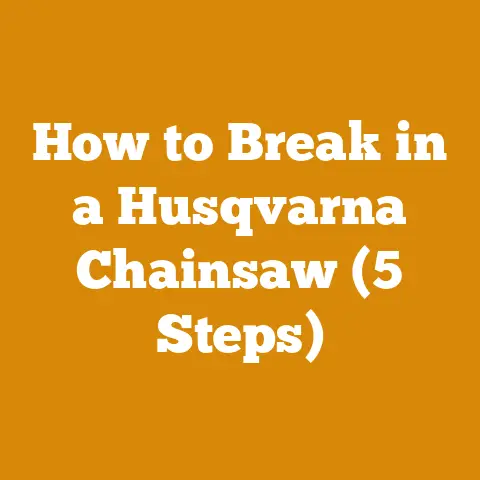Tree Insect Spray (4 Fast-Acting Solutions)
A Dilemma in the Garden
Ever found yourself staring at a tree infested with pests and thought, “What do I do now?” You might be tempted to grab the nearest spray can and go to town, but wait a second. We need a plan, right? If you’re like me, you probably want to handle this efficiently without causing further harm to your beloved trees.
This situation reminds me of the time when my favorite apple tree started showing signs of an aphid infestation. At first, I was in denial. “It can’t be that bad,” I thought. But soon enough, those tiny critters were swarming all over. That’s when I realized I needed a fast-acting solution. Let’s dive into some effective ways to tackle these pesky invaders.
Understanding the Problem: Tree Insect Infestation
Tree insects can be sneaky little buggers, can’t they? One day your tree looks fine, and the next, it’s under attack. Whether it’s aphids, caterpillars, or beetles, these pests can cause significant damage in no time. But not all hope is lost. With the right approach, we can tackle these problems head-on.
Why Are Insects Attracted to Trees?
Understanding why insects are attracted to certain trees can help in preventing infestations. Factors include:
- Nutrient Deficiencies: Weak trees are more susceptible.
- Environmental Stress: Drought or excess moisture can invite pests.
- Lack of Maintenance: Regular pruning and care deter insect invasions.
Common Signs of Infestation
Before jumping into solutions, it’s crucial to recognize the signs:
- Discolored Leaves: Yellowing or browning leaves may indicate aphids or mites.
- Holes in Leaves or Bark: Caterpillars and beetles often leave visible damage.
- Sticky Residue: Honeydew from aphids can make leaves sticky and attract mold.
- Visible Insects or Larvae: Sometimes, you’ll see the culprits outright.
4 Fast-Acting Solutions
1. Neem Oil Spray
Neem oil is my go-to solution for many pest problems. It’s natural and effective. Here’s how I do it:
Equipment and Materials Needed
- Neem oil concentrate
- Water
- Spray bottle or garden sprayer
- Gloves and protective eyewear
Steps to Prepare and Apply Neem Oil Spray
- Mix the Solution
- Combine 2 tablespoons of neem oil with 1 gallon of water in the sprayer.
- Shake Well
- Ensure the mixture is well blended. This is crucial for effectiveness.
- Application
- Spray the affected areas thoroughly, covering both leaves and branches.
Safety Precautions
Wear gloves and eye protection while mixing and applying neem oil. Avoid spraying on windy days to prevent drift.
2. Insecticidal Soap
Insecticidal soap works wonders, especially for soft-bodied insects like aphids.
Prerequisite Knowledge
Make sure you know what insects you’re dealing with, as this soap targets specific types.
Steps for Using Insecticidal Soap
- Mix According to Instructions
- Follow the label on your insecticidal soap container to mix it correctly.
- Spray the Infested Areas
- Focus on areas with visible insect activity.
- Reapply as Needed
- Sometimes, one application isn’t enough. Keep an eye on the tree and reapply if necessary.
Caution Box
Avoid using insecticidal soap in direct sunlight or high temperatures as it can damage plants.
3. Horticultural Oil
Horticultural oil is another great option, especially in dormant seasons.
Materials Required
- Horticultural oil
- Water
- Sprayer
- Protective gear
Application Process
- Dilute the Oil
- Mix horticultural oil with water as per the instructions on the label.
- Apply Evenly
- Coat the tree thoroughly, targeting overwintering eggs and larvae.
- Monitor Tree Health
- Check regularly for any signs of new infestations or damage.
Warning!
Horticultural oils can harm some plants if not applied correctly. Always read the label carefully.
4. Systemic Insecticides
When immediate action is needed, systemic insecticides can provide rapid relief.
Understanding Systemic Insecticides
These are absorbed by the plant, providing internal protection against insects.
Steps for Use
- Identify the Problem
- Make sure systemic insecticides are suitable for your specific pest issue.
- Follow Manufacturer Instructions
- Use only as directed to avoid harming beneficial insects or plant life.
- Allow Time for Absorption
- These products take time to work through the plant system, so patience is key.
Important Safety Precautions
Protective Gear: Always wear gloves, masks, and protective eyewear when handling chemicals.
Read Labels: Every product is different; never assume usage instructions are the same.
Environmental Impact: Consider the environmental effects of chemical sprays and choose eco-friendly options when possible.
Personal Experiences and Insights
I’ve had my fair share of battles with tree pests over the years. Let me share a few experiences that might resonate with you.
The Battle of the Apple Tree
My apple tree story continues back a few years ago when I first noticed those pesky aphids. Initially, I tried spraying them off with water—a common technique—but that only provided temporary relief. That’s when I turned to neem oil spray, following a friend’s advice who had faced a similar issue with her rose bushes.
After applying neem oil diligently for a couple of weeks, I saw a noticeable decline in the aphid population. It amazed me how a natural product could be so effective! But more than anything, it taught me the importance of patience and persistence when dealing with nature’s challenges.
Learning from Mistakes
I remember using insecticidal soap on my citrus trees once without checking the weather forecast—big mistake! The sun came out strong that day, and it ended up scorching some of the leaves. Lesson learned: always apply treatments early in the morning or late afternoon when the sun isn’t as intense.
Addressing Common Questions and Concerns
Will these sprays harm beneficial insects?
Yes, they can if not used properly. Always apply with care and consider targeted treatments to minimize impact on non-target species.
How often should I apply these sprays?
It varies by product, but frequent applications aren’t always better. Follow specific product guidelines and observe tree health before reapplying.
Can I make my own insecticide at home?
Sure thing! Some homemade solutions like soap and water mixtures can work for minor issues, but for severe infestations, commercial products tend to be more reliable due to their tested formulations.
Troubleshooting Tips and Best Practices
- If pests persist, reassess your method and ensure correct application.
- Monitor weather conditions before spraying; rain can wash away treatments.
- Regularly inspect trees for early signs of infestation to act swiftly.
- Diversify your approach by rotating different treatments to prevent resistance development among pest populations.
- Consider integrating cultural practices such as proper watering, fertilization, and pruning to strengthen tree health against pests.
Conclusion: Keeping Your Trees Healthy
Dealing with tree pests doesn’t have to be overwhelming. With these methods, you can protect your trees effectively. Remember to prioritize safety and environmental considerations in every step.
FAQ Section
Q: Is it safe to use these sprays on fruit trees?
A: Some are safe for fruit trees, but always check labels for specific guidance on edibility post-treatment.
Q: What’s the best time of year to apply these treatments?
A: It depends on the pest and product. Dormant oils are best in late winter, while others may be applied as needed during growing seasons.
Q: Can these treatments be used in organic gardening?
A: Yes, options like neem oil and insecticidal soap are often approved for organic use, but it’s important to verify each product’s certification.
Hope this helps you save your trees! Got more questions? Let’s chat more about it!






